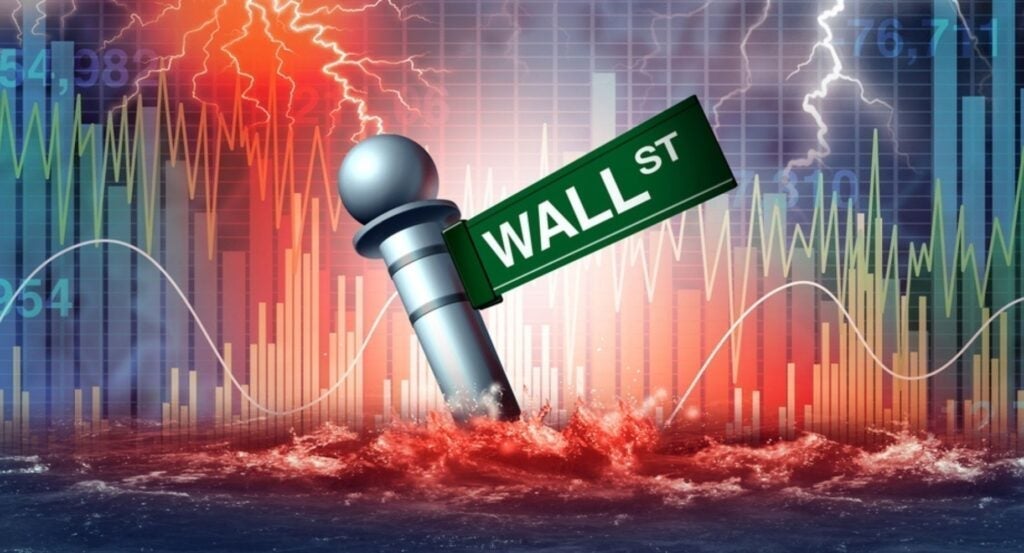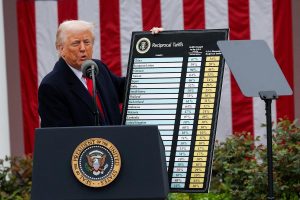
Markets are reeling after President Donald Trump unveiled sweeping tariffs on Wednesday, far exceeding investor expectations and triggering fears of an inflation spike.
Ringing alarm bells in a post-announcement note was Ed Yardeni, president of Yardeni Research and historically one of Wall Street’s most bullish voices, who now expects the U.S. economy to head to a stagflation regime.
“Trump’s Reign of Tariffs exceeds most expectations. The day after Liberation Day may be more like D-Day on Wall Street. That’s too bad,” he said.
Markets Swoon, Crude Prices Tumble
The initial market response was brutal.
Futures tied to the S&P 500 dropped 3.5% in premarket trading Thursday, with similar losses hitting the Nasdaq 100 and Dow Jones. The U.S. Dollar Index, tracked by the Invesco DB USD Index Bullish Fund ETF UUP, tumbled 2%, putting it on pace for its worst single-day performance since November 2022.
Commodities suffered heavy losses. Crude oil futures plunged 6%, the steepest decline since July 2022. Gold futures – as tracked by the SPDR Gold Trust GLD – retreated 1.5% from an all-time high of $3,192 per ounce.
Yardeni said he still expects gold prices could reach $4,000 by year-end, especially if Trump continues to push his aggressive tariff agenda.
Are We Headed Toward Stagflation?
The broader concern among investors and analysts isn’t just immediate market volatility, but what comes next. Yardeni said Trump’s tariff regime could be the trigger for a dangerous bout of stagflation—an economic environment where inflation remains high even as growth slows.
“We’ve recently warned that Trump’s Reign of Tariffs is very likely to boost inflation over the rest of the year, depressing overall consumer sentiment, real wages, and consumer spending,” Yardeni said.
He expects the Personal Consumption Expenditures inflation rate—a key gauge watched by the Federal Reserve—to rise from its current 2%-3% range to 3%-4% in the coming months.
“If the result is a consumer-led slowdown later this year (after a short auto-buying binge), the Fed won’t be able to help by easing monetary policy if inflation remains well above its 2.0% target,” Yardeni said. “The result could be 6-12 months of stagflation.”
Yardeni said the 25% tariffs on auto is set to drive up the cost of new and used cars, insurance premiums, and vehicle maintenance—much like the inflationary ripple effects seen during the COVID-19 pandemic.
The analyst also flagged the impact on government finances. With a 10% tariff floor in place and additional duties targeting major trade partners like China, Yardeni estimates the U.S. could generate between $300 billion and $600 billion in annual tariff revenues.
Even at the high end of that range, however, the revenue won’t be enough to offset rising debt costs. Net interest payments on U.S. government debt are projected to surpass $1 trillion this year, further pressuring the federal budget deficit.
Read Next:
Photo: Shutterstock
Momentum90.14
Growth–
Quality–
Value–
Market News and Data brought to you by Benzinga APIs
© 2025 Benzinga.com. Benzinga does not provide investment advice. All rights reserved.



